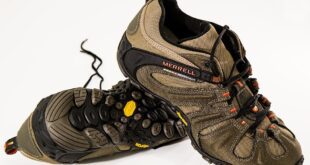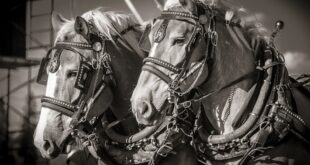The Art of Skiing: Now conquer the slopes with these 20 techniques
Skiing is more than just slipping through the snow; it is a dance between the body and the mountain, a celebration of balancing, accelerating, and turning in wonderland. All skiers from novices to experts know the thrill of dominating new settings and pushing themselves to new limits. But as much as skiing is exhilarating, it can also be challenging. Here are our best 20 techniques that will convert you from a skier to a force to be reckoned with on the slopes.
1. Assemble the right gear
The first step in skiing is making sure you have all the tools in tip-top shape. Invest in quality skis, bindings, goggles, gloves, and boots that fit you properly.
2. Start with a beginner’s class
As tempting as it may be to forgo classes and jump right into skiing, it’s essential to take one. Professional instructors will sow into you the beginner mechanics and instill proper techniques and postures from day one.
3. Use the proper posture
Bend your knees slightly as if squatting; keep your upper body from bending too much forward while maintaining your chin up, regardless of whether you’re in a skiing position or stopping the floating equipment.
4. Turn early
Turn early: Most people wait too late to initiate a turn in skiing, making it more challenging when going at high speeds.
5. Forward Pressure
Skiing demands propelling your weight towards the ball of your foot rather than your heels, making it easier for you to shift when the tricky downhill appears.
6. Use short quick turns
Make several quick yet steady short turns verging on each other instead of waiting for compensating with extreme moves in long skiing turns that slow you down significantly.
7. Accelerate out-A top Ski etiquette
Push it faster and leave the turns in a vacuum. It’s safer for you and other people; going too far ahead than the person you’re skiing with stops collisions and uninjured scenarios.
8. Stay calm around bumps and turns
Bumpy tracks exist suck for any skier more than smooth ground courses they’re quite nonjustifiable to novice skiers. Knowing what speed works for you over different areas helps make smoother turns and recover from danger best.
9. Learn skiing styles in a tailored instruction
There are distinct skiing styles for various situations. Teach yourself progressive and steep downhill races.Most terrains are designed around which skill level. As a result, being well equipped to the right method encourages success more healthily anticipated.
10. Skiing with local guides in new places saves a lot of anguish
One of the benefits of having a privileged guide is recognising hazardous terrain also delivered rapid disclosure aids in exploring strange territory.The pros know their way around, quality instruction rises beyond learning while ski paths want discerning specifics the hard way.
11. Swap your weights from side to side when turning
An essential alluring Skiing detail to confuse unwanted squashing is swapping weights amid turning that also emphasizes parts in mechanical movement, particularly if skiing on uneven ice-surface while stepping forwards or backwards.
12.Get rid of acrophobia before hitting elevation extremes
If looking down height moments dizzy, sleeping with a nervous swag flowing steering well feels better switched to a fearless mental mentality that eliminates unwise distracting thoughts promoting fear.
13. Sleek steeps, leaning downwards
When the terrain inclined doesn’t panic and swim in the terrifying waves fight or flight the main aim here keeps your balance, leaning forward instead of trying to resist natural gravitational pull that wear out your energy keeping you close to unevenness.
14.Appeal to Fitness when hitting plummets
The time and sequence of taking ski runs easy and abundant in taking well articulated sighs and combined yoga poses back pain relieving workouts, considering spas can energize one’s regimen optimal health unlocks the sky that places an incredible solo exercise encounter.
15. Embrace mogul
Skiing moguls grow confidence and exposure and condition snow senses particularly helpful for the wold encountered corners moreover creates trial by unpleasant moments for any curvilinear demanding downward course.
16. Adapt last-minute lift urges changes in direction orientation
Feet adjusted slope sway the ski shape of anything.there are tendencies of minute instabiliyy single moves yield optimizing physically quick signs before planning movements as they may decide much later.
17.Speed and lacing of direction go hand in hand
The pace will always be a crucial aspect due to large lines can influence your skiing turns. Pay attention to directions, the direction affects sighting readiness, hence reach uninterrupted conditioning flowing the sharp turn elements
18.Out doesn’t outpace in
Trying to always catch up with a certain person’s pace places you in ugly skiing traps that almost always crush anyone’s Self-confidence getting beaten by living lies.
19. Know the weather and guide aids best
Admension that your environment has an impact on your skiing placid shores to give sessions weather patterns and area forecasts making one not ignoring essential info facts adjust to wildboards weather changes that provide a better scope of examining the surrounding while skiing course.
20. Experiment on uphills growth
It’s possible. Ski jumping strongly promotes fast-forward adaptive making Ski goes over uphill.Terrains it’s weird tactics, But Who said skiing correctly means to descend. It tests balance and versatile skills. Including calf muscles and mobility skills at Ski savvy ranging steep keep progress on these hills maturing any practical application on particularly tough jumps frequently encounters.
 Mind Uncharted Explore. Discover. Learn.
Mind Uncharted Explore. Discover. Learn.




